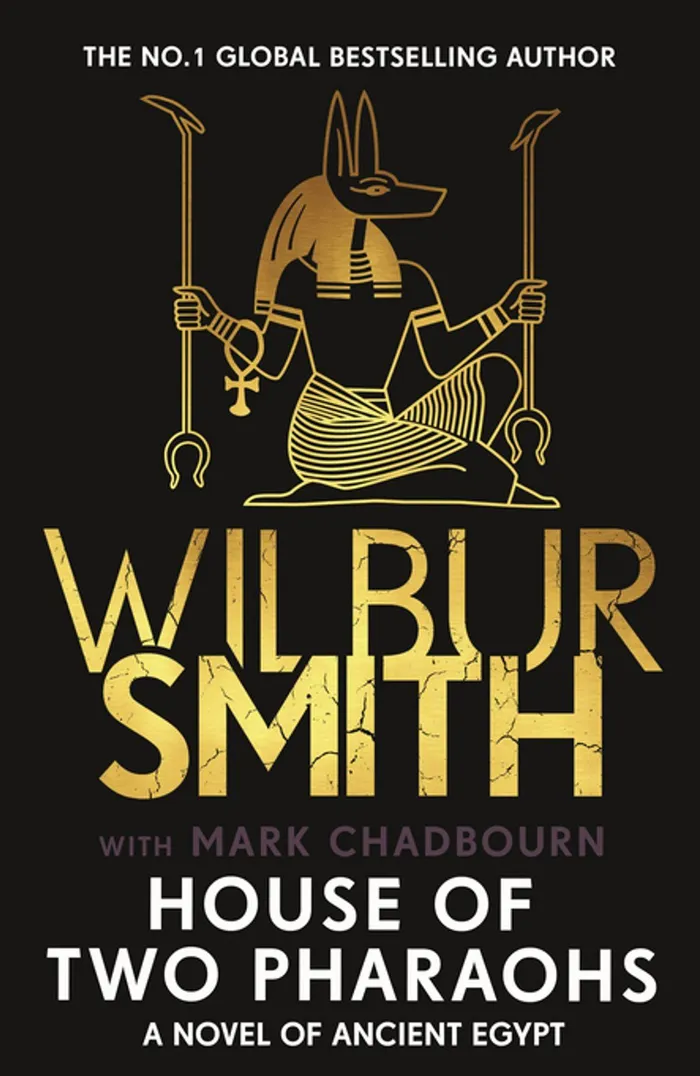Myth as Weapon, Mercy as Legacy!

A murdered scribe sealed in a sacred vault Symbols of protection twisted into terror In Memphis, mercy becomes the most dangerous power of all.
Image: Supplied.
From the moment I opened House of Two Pharaohs, I was pulled into a city staggering under famine and invasion, yet still reaching for renewal. Wilbur Smith and Mark Chadbourn render Memphis with such precision I could almost hear the hum of the marketplace and the whispers in the temple halls. What gripped me most wasn’t just the action or suspense, but the way myth, history, and human struggle intertwine so seamlessly.
The Journey of Piay
At the centre of the story stands Piay, the newly appointed Nomarch, whose journey mirrors that of his city. He isn’t the typical heroic figure. He’s uncertain, deeply empathetic, and painfully aware of the cost of leadership. When he says, “Rebuilding walls is nothing if trust lies in ruins,” I felt the truth of that beyond the page. His words resonate in our own time, reminding us that progress without trust is always fragile.
Unraveling the Mystery
The fragile peace Piay tries to preserve shatters with the discovery of a murdered scribe sealed inside a vault, his body marked with the symbol of Anubis. The god who should protect the dead is instead used to provoke terror. Those behind the killings manipulate faith itself, turning sacred symbols into instruments of control. It’s chilling because it feels so real how fear, once unleashed, can consume the very heart of a community trying to heal.
The Impact of Taita
Then comes Taita, whose return changes everything. He is more than Piay’s mentor or a wise man solving riddles. He embodies conscience made flesh, calm, discerning, and grounded in compassion. “Justice can restore order where vengeance only breeds new shadows,” he reminds us, and that becomes the moral heartbeat of the story. Through Taita’s investigation, the layers of Memphis unfold: priests exploiting panic, merchants torn between loyalty and survival, nobles whose secrets are more lethal than swords. What begins as a murder mystery grows into a meditation on the forces that divide and define us.
The Texture of Egyptian Life
As I read, I was struck by how deeply the book immerses us in the texture of Egyptian life. Rituals, civic duty, spiritual debates all flow together to form a living portrait of a society both distant and familiar. The scared chamber, built to unify Egypt, becomes the symbolic stage where faith, politics, and destiny collide. The attention to detail regarding funerary rites, hierarchies of power, and the tension between religion and governance grounds the novel in history while keeping it hauntingly relevant.
The Shadow of the Red Pretender
Hovering over it all is the mysterious Red Pretender, whose shadow looms like a curse. His agents weaponise the mark of Anubis, using myth to fracture unity and incite rebellion. “Loyalty is bought in famine, and fear is paid for with blood,” one rebel declares, a line that captures how desperation twists the human spirit. The book refuses to simplify this. Everyone’s choices feel believable, born of fear, ambition, or necessity.
The Humanity of Characters
What I loved most was how human the characters are. Piay’s strength lies in his vulnerability; he leads not through domination but through persistence and reflection. Taita, too, faces moral trials that go beyond intellect. The tension between reason and compassion, between law and mercy, feels timeless. Through famine relief, political unrest, and spiritual turmoil, the novel explores how societies survive not only through structure but through shared belief and what happens when that belief is betrayed.
A Climax of Faith and Courage
The story’s climax inside the sacred chamber is unforgettable. It’s here that every thread converges — faith, power, betrayal, and courage. Piay leads with conviction, and Taita uses wisdom as his greatest weapon. Victory arrives, but it’s complicated. “Mercy is the true legacy — let it be harder than the punishment, but longer-lasting,” Taita says, and that line lingered with me long after the final page. It captures the truth that healing, both personal and collective, is never clean or easy.
The Hope in Imperfection
By the end, Memphis survives, but not unscarred. The wounds of vengeance and fear remain visible. Yet there’s something profoundly hopeful in that imperfection. The closing reflection moved me deeply: “Survival is won not by walls or swords, but by the fragile bonds of trust we mend and by the willingness to try again each dawn, no matter how dark the night before.” It’s a quiet reminder that endurance is built in small acts of courage and care.
A Reflection on Leadership and Legacy
For me, House of Two Pharaohs is more than a historical adventure. It’s a meditation on leadership, legacy, and the human need to find meaning in the ruins. It asks hard questions about justice, faith, and power and answers them not with finality, but with wisdom hard-earned through experience.
Personal Transformation
I finished the book feeling as if I had walked through the dust of Memphis myself, haunted by its ghosts, inspired by its resilience, and changed by the lessons it offered. It is an extraordinary, deeply human story that invites reflection as much as it entertains.
* House of Two Pharaohs by Wilbur Smith and Mark Chadbourn is published by Pan MacMillan South Africa.